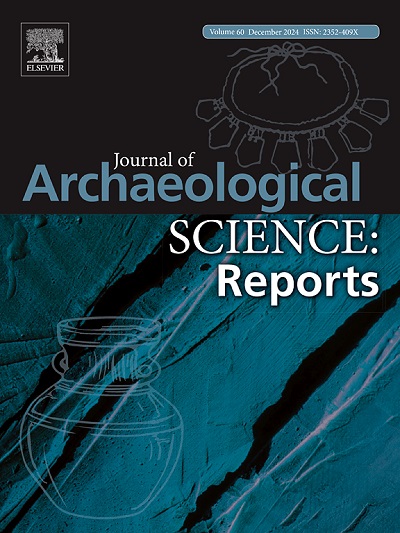罗马晚期东南阿尔卑斯地区十字路口的尤利亚埃莫纳殖民地——同位素视角
IF 1.5
2区 历史学
0 ARCHAEOLOGY
引用次数: 0
摘要
尤利亚埃莫纳殖民地(今斯洛文尼亚首都卢布尔雅那)是罗马意大利(X区)东北部的一个自治城镇。它的重要性与它在连接意大利与大陆省份和帝国东部地区的陆地和水路的十字路口的有利位置密切相关。罗马的埃莫纳镇有三个主要的墓地,位于通往城市的道路上,从西南方向(朝向阿奎莱亚),向东(西西亚,潘诺尼亚)和东北(波托维奥,潘诺尼亚)。在2017/2018年进行的戈斯osvetska道路挖掘中,发现了Emona北部墓地的一个特定区域,并揭示了一个墓地综合体,在空间上与邻近的墓地分开。为了更好地了解罗马晚期埃莫纳和这个墓地群的人,对在戈斯osvetska路挖掘的27个人进行了多同位素研究,并建立了卢布尔雅那及其周边地区的生物可利用锶(BASr)基线。同位素分析表明以C3植物为主的饮食,有一些来自动物蛋白和C4植物的贡献。大多数个体表现出当地的氧和锶信号,与罗马埃莫纳周围的气候和农业景观一致。少数异常值表明个体有不同的饮食和可能的非本地血统。本文章由计算机程序翻译,如有差异,请以英文原文为准。
Colonia Iulia Emona at the crossroads in the South-Eastern Alpine region during the late Roman period – An isotope perspective
Colonia Iulia Emona (present-day Ljubljana, capital of Slovenia) was an autonomous town in the north-eastern part of Roman Italy (regio X). Its importance is closely linked with its favourable position at the crossroad of land and water routes connecting Italy with continental provinces and Eastern regions of the Empire. The Roman town of Emona had three major necropolises, situated along roads approaching to the city from the South-West (direction towards Aquileia), the East (Siscia, Pannonia), and the North-East (Poetovio, Pannonia). Excavations of the Gosposvetska road, conducted in 2017/2018, unearthed a particular area of the Northern necropolis of Emona and revealed a cemeterial complex, spatially separated from the neighbouring burial grounds. To better understand the people from Late Roman Emona and this cemeterial complex, a multi-isotopic study on 27 individuals recovered from the excavation at Gosposvetska road was carried out and a bioavailable strontium (BASr) baseline for Ljubljana and its surrounding was established. The isotopic analyses suggest C3 plants-based diet, with some contribution from animal proteins and C4 plants. Most individuals exhibit local oxygen and strontium signals, consistent with the climate and agricultural landscape surrounding Roman Emona. The few outliers indicate individuals with different diet and possibly non-local origins.
求助全文
通过发布文献求助,成功后即可免费获取论文全文。
去求助
来源期刊

Journal of Archaeological Science-Reports
ARCHAEOLOGY-
CiteScore
3.10
自引率
12.50%
发文量
405
期刊介绍:
Journal of Archaeological Science: Reports is aimed at archaeologists and scientists engaged with the application of scientific techniques and methodologies to all areas of archaeology. The journal focuses on the results of the application of scientific methods to archaeological problems and debates. It will provide a forum for reviews and scientific debate of issues in scientific archaeology and their impact in the wider subject. Journal of Archaeological Science: Reports will publish papers of excellent archaeological science, with regional or wider interest. This will include case studies, reviews and short papers where an established scientific technique sheds light on archaeological questions and debates.
 求助内容:
求助内容: 应助结果提醒方式:
应助结果提醒方式:


